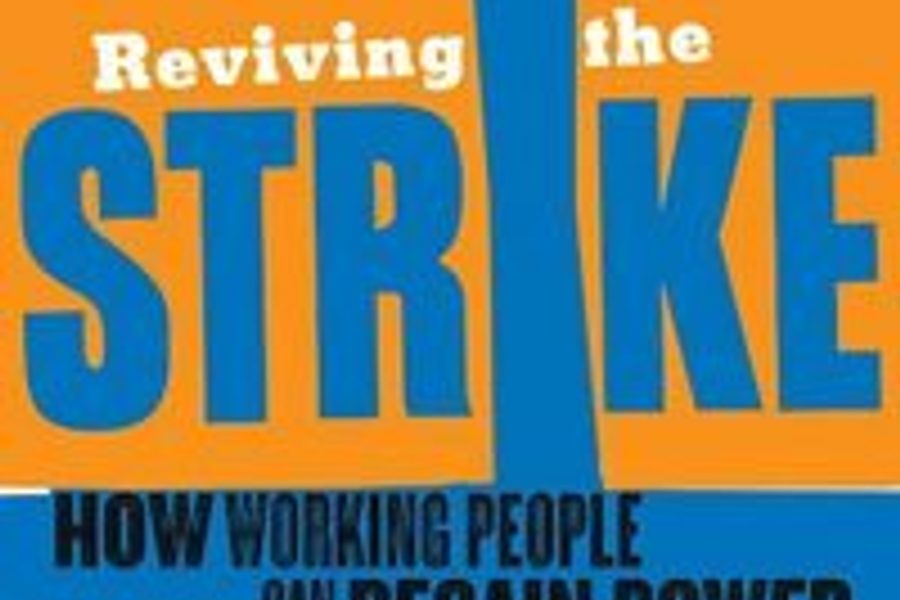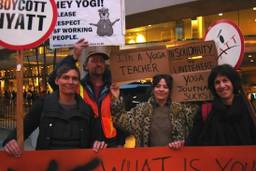
Reviving the Strike is a primer for every trade unionist tired of being the victim
A new book by labor attorney and veteran union negotiator Joe Burns, Reviving the Strike: How Working People Can Regain Power And Transform America, is a valuable contribution to resurrecting fundamental lessons from the neglected history of American labor.
As the title suggests and as Burns emphasized to me, “the only way we can revive the labor movement is to revive a strike based on the traditional tactics of the labor movement.” But he doesn’t stop there. Burns — whose book is excerpted on Working In These Times here—reviews for the reader the full range of tactics and strategy during the exciting, turbulent and often violent history of American labor.
Refreshingly, he also provides critical assessments normally avoided by labor analysts of a whole series of union tactics that have grown enormously popular over the last several decades. For example, he examines and reviews the mixed results of boycotts, very short temporary strikes and corporate campaigns. Even organizing the unorganized membership drives come under his scrutiny for a bit of criticism, especially when they are mistakenly cast as the main formula for reversing labor’s rapid descent.
Membership will only increase, Burns believes, once labor adopts a more militant strategy, outlined in the book, which successfully leads to substantial economic gains for workers.
He details the experience of the 1930s when millions flocked to fledgling unions only because they were seen as immediately capable of improving the everyday lives of working people. It will be similar victories, Burns strongly emphasizes, and not any secret-weapon ingenious organizing techniques that will boost union membership.
But Burns reserves most of the blame for labor’s alarming decline on the last several generations of union leaders who have largely abandoned labor’s most powerful weapons of striking, of establishing national industry contract standards and of standing for solidarity with others under attack from capital.
And, of course, the author particularly deplores the virtual disappearance from today’s labor scene of classical strikes that totally shut down production.
He cites statistics that “in 1952, there were 470 major strikes (those of more than 1,000 workers) involving 2,746,000 workers. By contrast, today, in 2008, there were only 15 major work stoppages, involving 72,000 workers.”
Reclaiming our history
Of course, workers engage in strikes only as a last resort, when all other forms of negotiations have broken down, because it is well understood the conflicts involve such big personal commitments. Harry Bridges, International Longshore & Warehouse union (ILWU) founder and leader of the 1934 San Francisco General Strike, compared a strike to a small revolution in his oral history, Centennial Retrospective.
“You see, in a small way, temporarily, a strike is a small revolution. It simply means a form of revolution because you take over an industry or a plant owned by the capitalists and temporarily you seize it. Temporarily you take it away.”
The Flint, Mich., auto sit-in strike and numerous other factory occupations spreading throughout America in this same period, underscored Bridges’ warning of the powerful challenge posed to capital.
Burns fully describes the strategy and tactics of this militant depression-era and does a good job explaining how terrified corporate magnates and compliant government officials hurriedly pushed through a series of laws primarily designed to smother the fiery social rebellion.
As a result, even before the mass upsurge reached its zenith, labor was confronted with a maze of legal restrictions and penalties begun with the 1935 Wagner Act that substituted sluggish mediation for impassioned class struggle.
Restrictions on mobilizing membership power as the final arbiter in labor disputes intensified with the onerous 1947 “Slave-Labor” Taft-Hartley Act and the 1959 Landrum-Griffin legislation.
The reader should find it quite interesting to learn the details of how labor militancy and the ability to mobilize the membership was increasingly curtailed by these government regulations.
New strategies replace the strike
“To traditional trade unionists, the point of a strike was to ….stop production or otherwise inflict sufficient economic harm to force an employer to agree to union demands. That simple, common-sense notion formed the basis of labor economics for the first 150-odd years of American trade unionism.
“By the 1980s, however, conventional wisdom had reversed, and stopping production had become a fringe idea. That, more than anything else,’” the author concludes, “explains the weakness of the modern union movement.”
As a result, Burns argues, most unions have largely abandoned completely shutting down an employer as part of their strategy. As mentioned earlier, some adopt short-term one, two or three-day strikes as an alternative; others adopt corporate campaigns which shifts focus even further away from mass picketing at the work site.
While some partial victories have been won with these tactics, most notably the JP Stevens’ corporate campaign of the late 1970s, and recent hotel union victories utilizing both boycotts and short-term strikes, none of these approaches, the author asserts, can reverse labor’s plunge into oblivion.
Burns does not so much completely discount these approaches as part of an overall program, he simply rejects them as a substitute for a more militant strategy which begins with shutting down production. He writes, for example, that “while the corporate campaign can, on occasion, work in conjunction with a strike strategy, it will never replace a strike that halts production.”
He has a point.
Recent public employee battles in Wisconsin, Indiana, Ohio and California are inspiring and unprecedented in so many ways but they also beg the question of why the fights bogged down.
Why was the tremendous energy and popularity of mass protests not converted into strikes where labor’s power could have been most powerfully exerted, something not even seriously considered by national union leaders?
The answers are, of course, very complicated. Burns provides a lot of insight by explaining both the onerous legal penalties and complex political obstacles discouraging labor from utilizing strikes as our most basic and powerful weapon of self defense.
The dilemma of our times is that unions react defensively rather than offensively to the numerous and myriad undemocratic restrictions on our freedom of mass assembly, of free speech and of our rights to express solidarity through secondary boycotts and sympathy strikes.
Unjust laws must be aggressively challenged that prevent people from organizing massive picket lines capable of shutting down production and stopping scabs from taking their jobs.
This is the history of labor, and it is well documented by Burns.
In fact, America’s history makes clear that progress has only resulted from violating unconstitutional and undemocratic laws enacted by the business class; legislation that has nothing to do with justice and everything to do with keeping the rich in power.
All is explained by Burns. He has written a primer for every trade unionist tired of being the victim.







